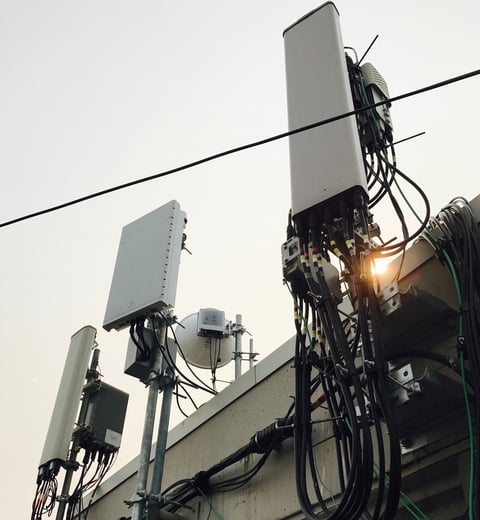As wireless network operators look to deploy higher orders of MIMO antenna technology in order to improve speeds, tower companies are hoping to cash in as a result. Specifically, tower company executives have pointed out that the companies may increase tower rental fees they charge to wireless carriers because those new MIMO antennas are bigger and heavier than existing antennas.
“We have begun to receive amendment applications for new MIMO antennas, which are just now becoming available in higher performance designs and that will facilitate much faster speeds using existing low and mid band spectrum,” said Jeff Stoops, CEO of tower company SBA Communications, this week during the company’s quarterly conference call with analysts, according to a Seeking Alpha transcript of the event. “These new MIMO antenna are generally wider and deeper than current antennas and in some cases way over twice as much.”
And, in a response to a question about the proposed merger of Sprint and T-Mobile, Stoops noted that the combined company would likely continue deploying advanced MIMO antennas—and that SBA would charge extra for such equipment. “I'm not a product expert, but to my knowledge there is no single radio unit and certainly no single antenna unit that covers the spectrum, covers the range of spectrum that will be deployed by the combined company, so you're looking at multiple units to cover that full array of spectrum and then if you start to get to the desired MIMO configuration on the antennas that actually could add quite a bit of weight and that—obviously depending on the load of things like that that will impact the price, so that there that there could be a wide range of about outcomes there,” he said.
Stoops wasn’t the only tower company executive who hinted at the possibility that tower companies could charge wireless operators additional fees for increases in the weight and size of new antennas.
“I'll give you one quick example, just the 600 megahertz antenna versus the 700 megahertz antenna, the optimal antenna height if you will is an extra foot, right? So that comes with weight. It comes with an upcharge,” explained American Tower’s James Taiclet during that company’s quarterly conference call with investors this week, according to a Seeking Alpha transcript. “So that's just one small example of when you get into more advanced technologies, whether it's lower band spectrums, which have bigger antennas or higher band spectrums, which have smaller antennas, but a lot more of them and a lot closer together, that the physics are hard to get around. You've got to—if you want to put that traffic out there using those frequencies, you're going to have to deploy the equipment at scale to meet that 30-plus percent increase in data demand.”
Perhaps not surprisingly, Wall Street analysts picked up on the issue: “Massive MIMO deployment, for example, is seen as a net positive given size and weight of antennas required to deploy the technology,” wrote the analysts at Barclays in a research note on SBA’s earnings.
RELATED: Editor’s Corner—From Sprint to T-Mobile, what’s all the fuss about massive MIMO?
Indeed, in comments about their proposed merger, T-Mobile and Sprint executives discussed how massive MIMO technology would help improve network speeds and performance in a network that would combine T-Mobile’s 600 MHz and Sprint’s 2.5 GHz spectrum assets.
Already Sprint said in February that it would turn on 64T64R (64 transmit, 64 receive) Massive MIMO technology in three cities by the end of last month. Other operators, including Verizon and AT&T, have discussed their efforts to deploy improved MIMO technology, including 4x4 configurations.
Interestingly, in response to this article, a Sprint spokesperson noted that the operator's massive MIMO can be deployed using a fairly small form factor. The spokesperson offered this picture, with the massive MIMO antenna in the middle, as an example:

Article updated May 2 with additional information from Sprint.

